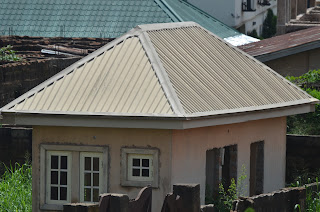 |
| Image 1:ISO 400, 300MM,0EV,F/5.6, 1/200, 7.09AM |
The sun was just rising from the east and quite low on the horizon. I used a uniform light sensitivity of 400 and uniform focal length of 300mm. As is observe light distribution appears the same across the building.
 |
| Image 2: ISO 400, 300MM,0EV, F5.6, 1/2500,8.27AM |
I took the same image an hour later at 8.27am and got a different shutter speed of 1/2500. This I later realized may have been because my camera was set to spot metering in which case it was measuring the light only within a small area resulting in faster shutter speed which may be due to the sensor. This is the golden light period and i expected to get something sharper. I took another picture 3 hours later shown below:
 |
| Image 3:ISO 400, 300mm,0EV,f5.6,1/4000, 11.31AM |
 |
| Image 4: ISO 400, 300mm,0EV,F/5.6,1/1600,12.37PM |
 |
| Image 5:ISO 400,300MM,0EV,F/5.6,1/2500 |
The day was also a cloudy day and with clouds moving, this may have affected the view. As the evening wore on, the sky became clearer and less cloudy. In aperture priority mode, any time i pressed the shutter half way, my shutter speed kept fluctuating showing that light distribution was changing.
 |
| IMAGE 6:ISO 400,300MM,0EV,F/5.6,1/1250,4.23PM |
At 4.23pm when i took the above image, the horizon had moved with the sun heading west and reflecting on the building. IIt was still spot metering at this point yet the picture appears to be better with the light more evenly distributed and golden.
 |
| Image 7:ISO 400,300MM,0EV,F/5.6,1/800,5.19PM |
 |
| Image 8:ISO 400,300MM,0EV,f/5.6,1/640,5.53PM |
 |
| Image 9:ISO 400,300MM,0EV,F/5.6,1/640,6.09PM |
CONCLUSIONS
From the above exercise , it can be concluded that:
1. Light and shadow movement can be anticipated throughout the day.
2.As the sun gets lower at the end of the day, more and more of the scene gets into shade.
3. The light in the early hours of the morning and late hours of the evening gives a more golden spread.
4.A clearer weather gives more definite changes in light distribution.